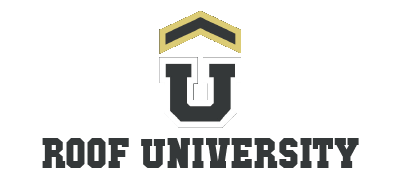EPDM (Ethylene Propylene Diene Monomer) is a popular roofing material widely used for flat and low-slope roofs. Known for its durability, flexibility, and resistance to harsh weather conditions, EPDM has become a go-to choice for both residential and commercial roofing applications. This guide explores EPDM roofing, its benefits, installation, and maintenance needs.
What is EPDM Roofing?
EPDM is a synthetic rubber membrane derived from a blend of ethylene, propylene, and a small amount of diene monomer. This single-ply roofing material is available in black or white and is typically installed in large sheets to minimize seams, which are potential points of failure.
EPDM roofing is lightweight, waterproof, and highly resistant to UV rays, ozone, and extreme temperatures, making it an ideal choice for long-term performance.
Benefits of EPDM Roofing
- Durability:
- EPDM membranes have a lifespan of 20 to 30 years or more with proper maintenance.
- Resistant to punctures, tears, and abrasions.
- Weather Resistance:
- Withstands extreme temperatures, from -40°F to over 300°F.
- Provides excellent protection against UV radiation and ozone degradation.
- Flexibility:
- Remains pliable in various climates, making it suitable for buildings in diverse regions.
- Ease of Installation:
- Available in large sheets, which reduces the number of seams.
- Can be installed using adhesives, mechanical fasteners, or as a fully adhered system.
- Eco-Friendly:
- EPDM is recyclable at the end of its lifecycle.
- The white version reflects sunlight, improving energy efficiency in hot climates.
- Cost-Effective:
- Affordable upfront cost compared to other flat roofing materials.
- Low maintenance requirements reduce long-term expenses.
Installation Methods for EPDM Roofing
- Fully Adhered System:
- The membrane is glued directly to the roof substrate using adhesive.
- Provides a smooth, seamless appearance and strong wind resistance.
- Mechanically Attached System:
- Secured to the roof deck with fasteners and plates.
- Commonly used on large commercial buildings.
- Ballasted System:
- Held in place by a layer of ballast, such as gravel or pavers.
- Economical and fast to install but requires a roof capable of supporting the additional weight.
Maintenance and Care for EPDM Roofing
- Regular Inspections:
- Check for punctures, tears, or loose seams, especially after storms.
- Clean the Surface:
- Remove dirt, debris, and algae buildup to maintain the membrane’s performance.
- Repair Damage Promptly:
- Use EPDM-compatible repair kits to patch small holes or tears.
- Recoat as Needed:
- Apply reflective coatings to black EPDM roofs to improve energy efficiency and prolong their lifespan.
- Monitor Drainage:
- Ensure water drains properly to prevent pooling, which can stress the roof membrane.
Common Applications of EPDM Roofing
- Commercial Buildings:
- Warehouses, office buildings, and retail spaces benefit from EPDM’s durability and cost-effectiveness.
- Residential Flat Roofs:
- EPDM is a practical option for home extensions, garages, and modern flat-roofed homes.
- Green Roofs:
- Compatible with rooftop gardens due to its waterproofing properties.
- Solar Panel Integration:
- Works well as a base for solar panel installations, thanks to its long lifespan and reflective properties.
Challenges of EPDM Roofing
- Vulnerability to Punctures: While durable, EPDM can be punctured by sharp objects or heavy foot traffic.
- Seam Failure: Improper installation or aging seams can lead to leaks.
- Color Considerations: Black EPDM absorbs heat, which may not be ideal for hot climates unless coated or replaced with white EPDM.
Why Choose EPDM?
EPDM is a proven flat roofing solution that offers excellent value for money, longevity, and reliability. Its adaptability to various installation methods and climates makes it a versatile option for property owners seeking a low-maintenance, high-performance roof.
By understanding the properties of EPDM and adhering to proper installation and maintenance practices, you can ensure this roofing system provides decades of dependable service.
